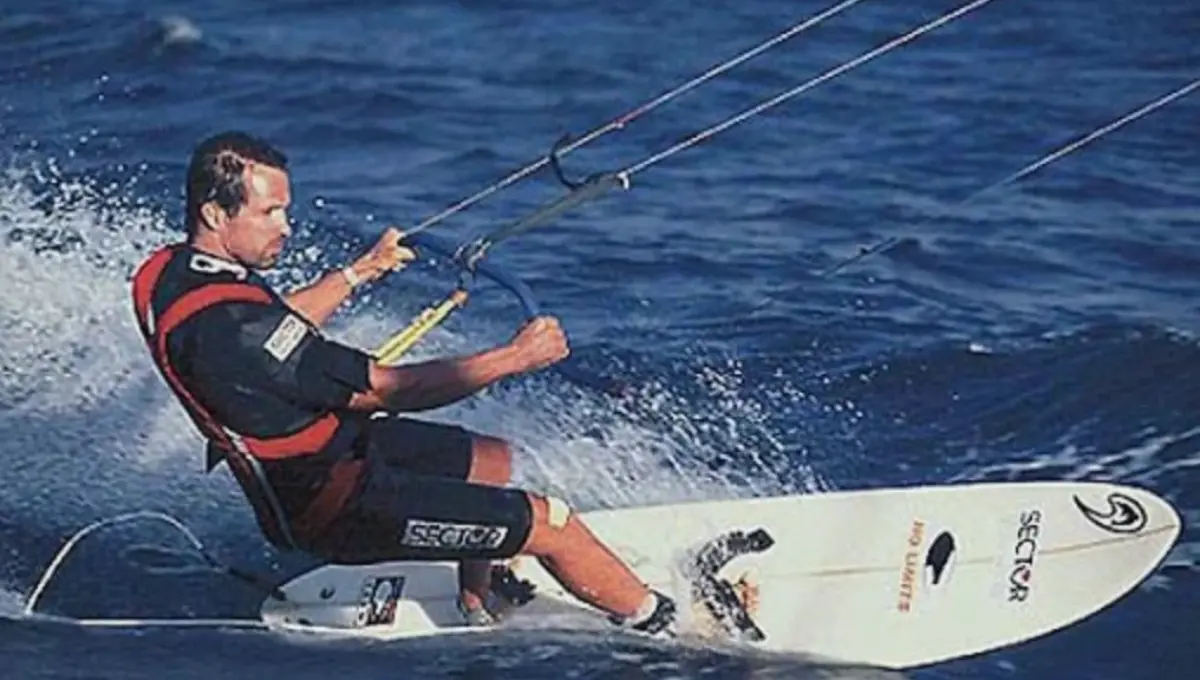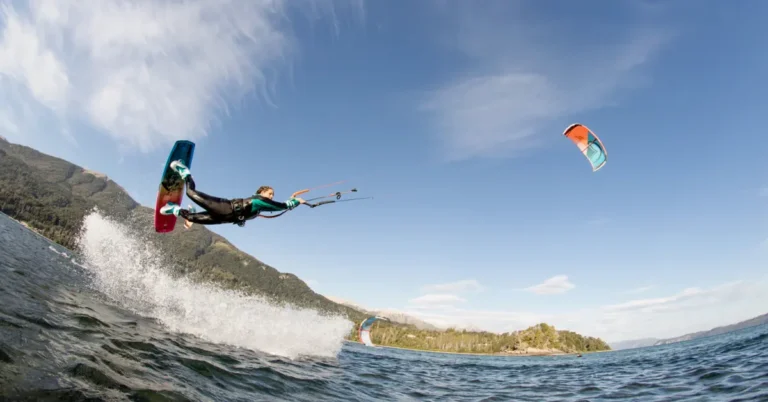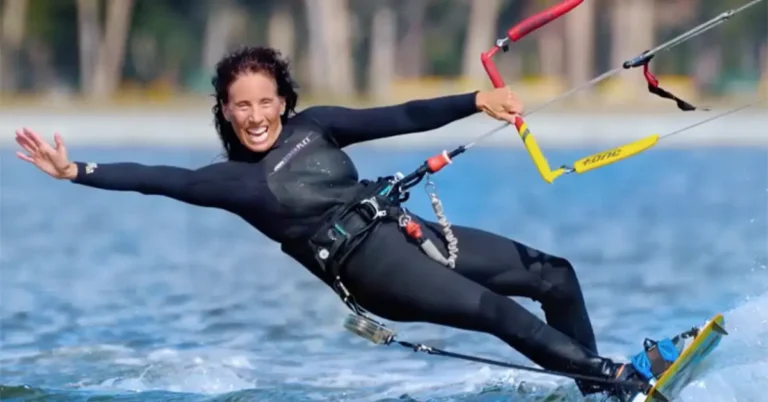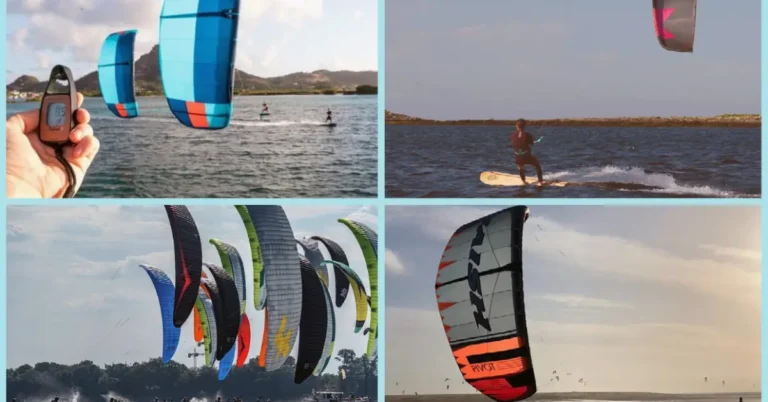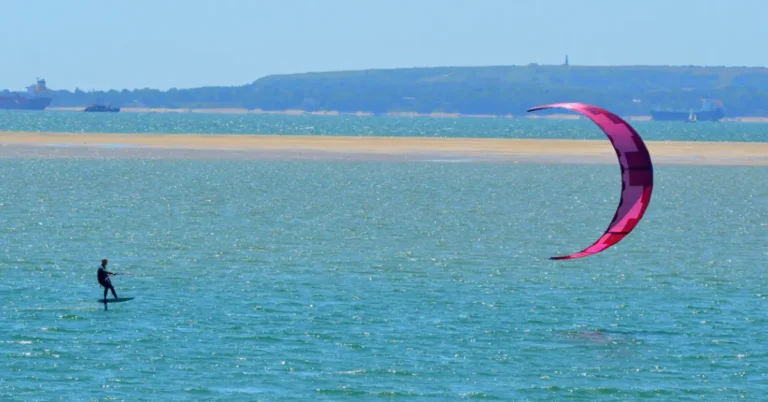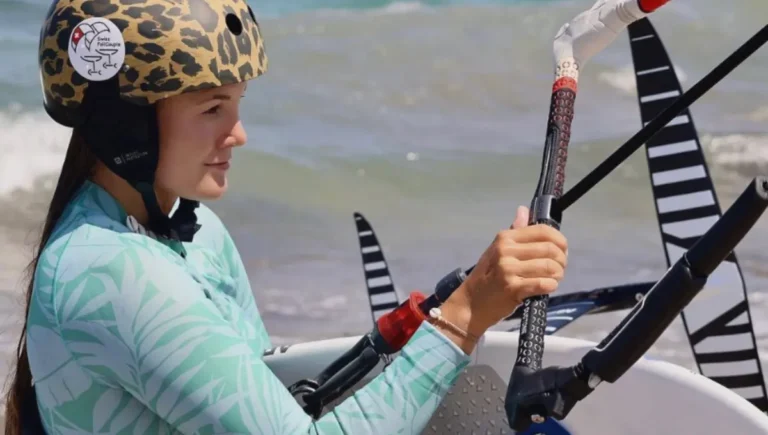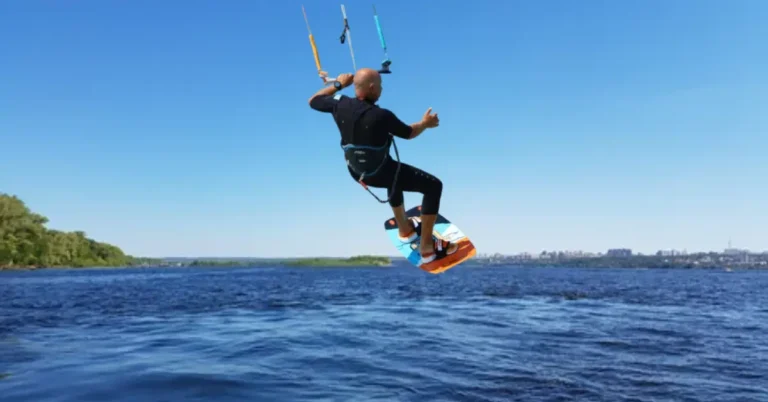When Was Kitesurfing Invented?
Have you ever pondered the origins of kitesurfing, the inventor of the inflatable kite, or the evolution of this exhilarating sport over time? Kitesurfing stands out as one of the most thrilling and dynamic activities globally.
It offers fast-paced action, featuring breathtaking jumps and the challenge of riding waves. In this piece, we’ll delve into the fascinating journey of how this adrenaline-pumping sport came into existence.
Also Read: Long Does It Take To Learn To Kitesurfing
The modern sport of kitesurfing originated around 1995.
During the 1800s, George Pocock pioneered the use of larger kites to propel carts on land and ships on water, employing a four-line control system similar to what is still used today.
This innovation allowed both carts and boats to maneuver and sail against the wind, with the kites capable of sustained flight for extended periods.
Pocock’s motivation stemmed partly from the desire to establish kite power as a viable alternative to horsepower, aiming to circumvent the unpopular “horse tax” of that era.
In 1903, aviation pioneer Samuel Cody further advanced kite technology by creating “man-lifting kites” and achieved the remarkable feat of crossing the English Channel in a collapsible canvas boat propelled by a kite.
By the late 1970s, advancements in materials such as Kevlar and Spectra for flying lines, coupled with the development of more controllable kites boasting enhanced efficiency, revolutionized practical kite traction.
In 1978, Ian Day’s groundbreaking “FlexiFoil” kite-powered Tornado catamaran shattered speed records, surpassing speeds of 40 km/h, marking a significant milestone in the evolution of kite-powered transportation.
Development of Kitesurfing and Kite Buggying
Throughout the 1980s, there were sporadic but successful attempts to integrate kites into various recreational activities, including canoes, ice skates, snow skis, water skis, and roller skates.
In the 1970s and early 1980s, Dieter Strasilla, an innovator from Germany, pioneered parachute-skiing and later developed a kiteskiing system using homemade paragliders.
His system featured a ball-socket swivel mechanism that allowed pilots to navigate upwind, uphill, and perform controlled takeoffs.
Collaborating with his friend Andrea Kuhn from Switzerland, Strasilla utilized this invention with surfboards and homemade land buggies.
Around 1979, one of Strasilla’s patents outlined the first use of an inflatable kite design for kitesurfing.
Meanwhile, brothers Bruno Legaignoux and Dominique Legaignoux from the Atlantic coast of France played a pivotal role in the late 1970s and early 1980s by patenting an inflatable kite design in November 1984. This design laid the groundwork for subsequent refinements by various companies in the kitesurfing industry.
In 1990, Peter Lynn pioneered practical kite buggying at Argyle Park in Ashburton, New Zealand. Lynn paired a three-wheeled buggy with an early version of the modern parafoil kite. Kite buggying quickly gained popularity worldwide, with over 14,000 buggies sold by 1999.
The evolution of modern kitesurfing was driven by parallel efforts undertaken by the Roeselers in the USA and the Legaignoux brothers in France, occurring concurrently with the development of kite buggying.
Evolution of Kitesurfing
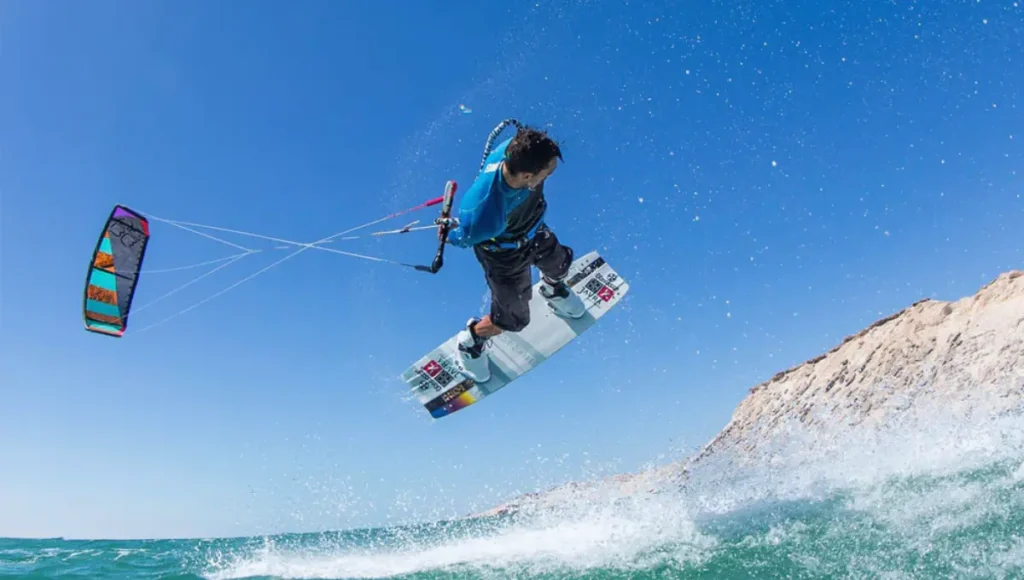
Bill Roeseler, an aerodynamicist at Boeing, along with his son Cory Roeseler, developed and patented the “KiteSki” system in 1994.
This innovative system featured water skis powered by a two-line delta-style kite, controlled via a bar-mounted winch/brake combination.
The KiteSki boasted rudimentary water launch capabilities and the ability to navigate upwind.
Cory Roeseler is widely recognized as the pioneer of modern kitesurfing. His inaugural use of the KiteSki system in Maui dates back to 1993.
In 1995, Cory showcased his skills to Peter Lynn at Lake Clearwater in New Zealand’s Ashburton Alpine Lakes region, demonstrating impressive speed, balance, and upwind ability on his ‘ski’. Subsequently, in the late 1990s, Cory’s setup transitioned to a single board akin to a surfboard.
In 1996, Laird Hamilton and Manu Bertin played pivotal roles in popularizing kitesurfing off the coast of Maui in Hawaii. Meanwhile, in Florida, Raphaël Baruch experimented with riding windsurfing boards equipped with various foil kites. Over time, the sport’s name evolved from “flysurfing” to “kitesurfing”.
Key Developments in the Evolution of Kitesurfing
In 1996, Laird Hamilton and Manu Bertin played pivotal roles in demonstrating and popularizing kitesurfing along the Hawaiian coast of Maui.
Simultaneously, in Florida, Raphaël Baruch experimented with riding windsurfing boards equipped with various foil kites. This period also marked the transition of the sport’s name from “fly surfing” to “kitesurfing.”
In 1997, the Legaignoux brothers introduced the groundbreaking “Wipika” kite design, featuring preformed inflatable tubes and a simple bridle system at the wingtips, significantly enhancing water re-launch capabilities.
During the same year, Raphaël Salles and Laurent Ness developed specialized kite boards, contributing to the advancement of kitesurfing equipment.
By the end of 1998, kitesurfing had evolved into an extreme sport, with distribution and instruction primarily handled by a select group of shops and schools worldwide.
The inaugural kitesurfing competition took place in Maui in September 1998, with Flash Austin emerging as the victor.
Evolution of Kitesurfing: Mainstream Adoption and Technological Advancements
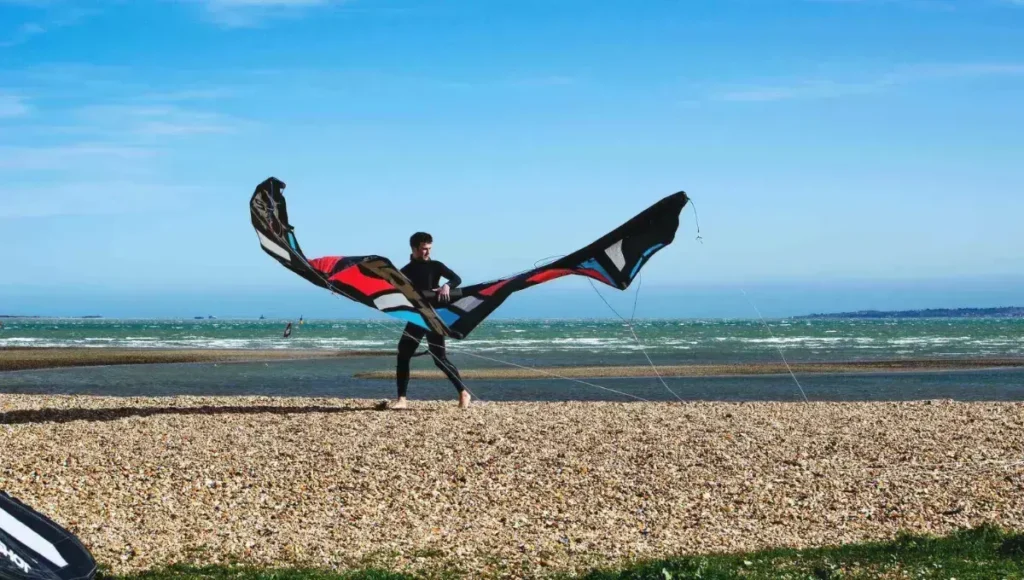
Starting in 1999, kitesurfing gained mainstream popularity as major windsurfing manufacturers like Naish and Neil Pryde entered the scene.
Single-direction boards, inspired by windsurfing and surfing designs, became the prevalent choice among kiteboarders.
As of 2001, twin-tip bi-directional boards gained traction among flat water riders, while directional boards remained favored for surf conditions.
In 2005, Bruno Legaignoux revolutionized the sport with the development of the bow kite design, licensed to numerous kite manufacturers.
Bow kites offered up to 100% de-power, significantly enhancing safety for beginners and less experienced kitesurfers. The Cabrinha Crossbow emerged as the first widely available bow kite.
May 2012 saw the announcement of kitesurfing as a course racing style for the 2016 Rio Olympics, replacing windsurfing.
Following a decision by the ISAF General Assembly in November 2012, windsurfing regained its Olympic status for both Men and Women, while kitesurfing was left out of the Olympic program. As of now, there are no plans or timetables for the inclusion of kitesurfing as an Olympic sport.
By 2013, kitesurfing had diversified into over a dozen distinct styles, including wave riding, freestyle, wakestyle, course racing, speed, downwinders, jumping, airstyle, wakeskate, and kite cross.
A wide array of kite types are now available to accommodate various kitesurfing styles, including C-kites, Bow kites, Delta kites, Hybrid kites, Foil kites, and specialized light wind kites.
Frequently Asked Questions
Conclusion
The inception of kitesurfing can be traced back to around 1995, although its roots extend much further into history. From George Pocock’s innovative use of kites in the 1800s to the pioneering efforts of individuals like Dieter Strasilla and the Legaignoux brothers, kitesurfing has evolved into a thrilling and dynamic sport.
With key developments such as the KiteSki system and the introduction of bow kites, kitesurfing has experienced significant growth and mainstream adoption. Despite its exclusion from the Olympic program, kitesurfing continues to captivate enthusiasts worldwide with its diverse styles and technological advancements.
